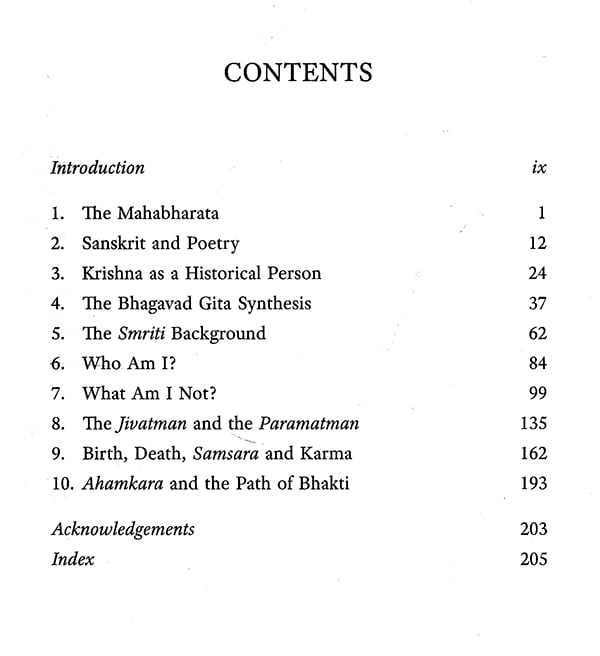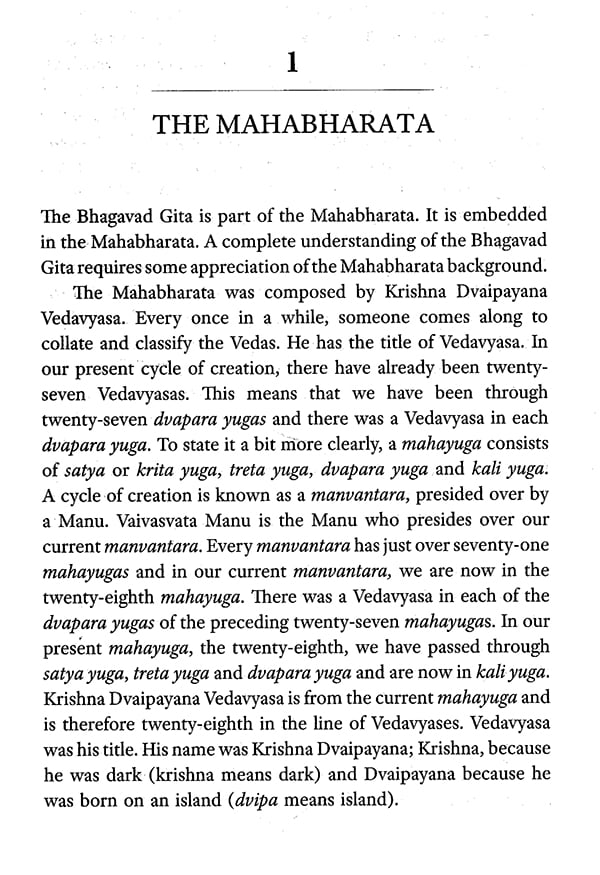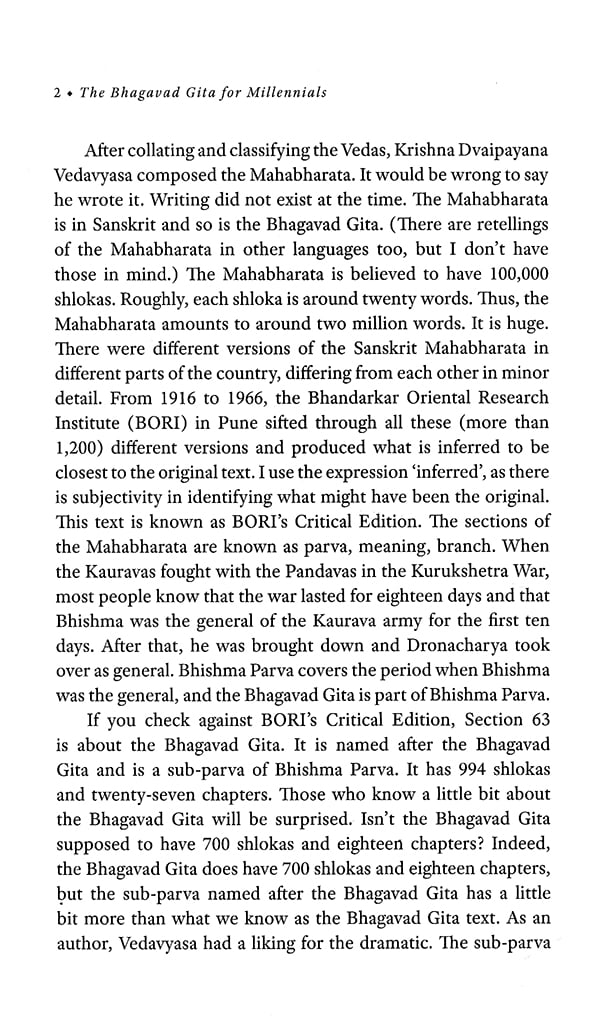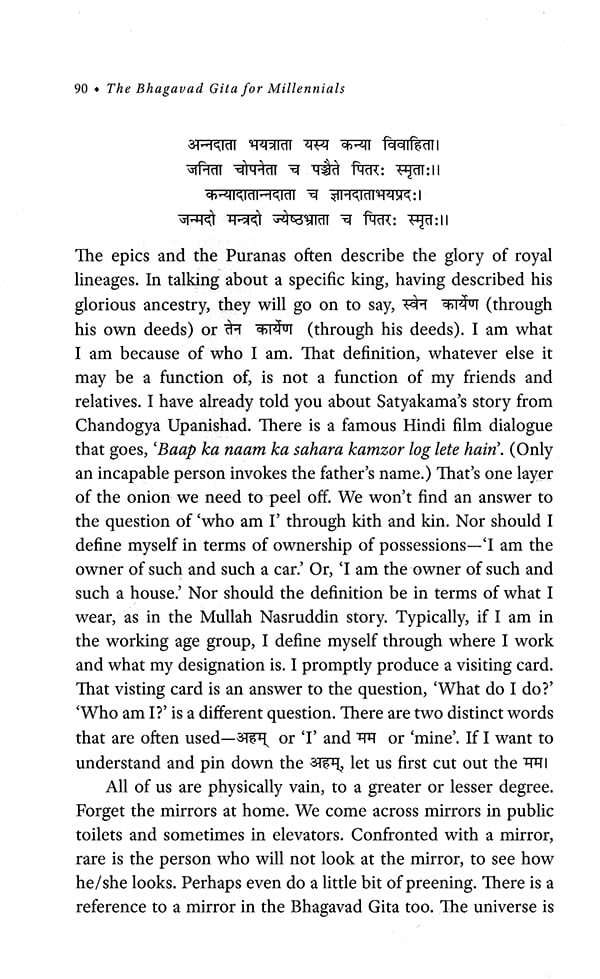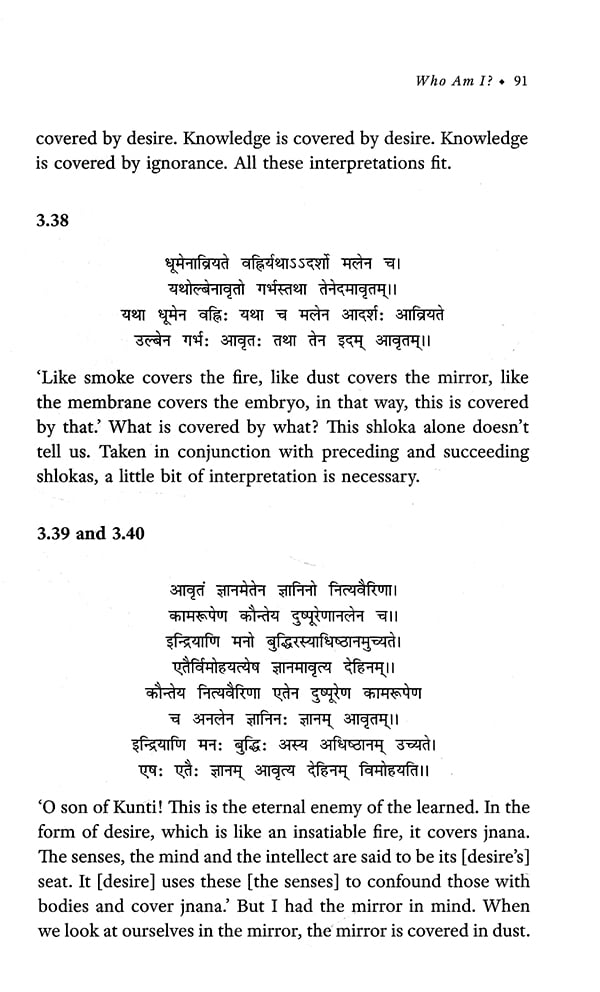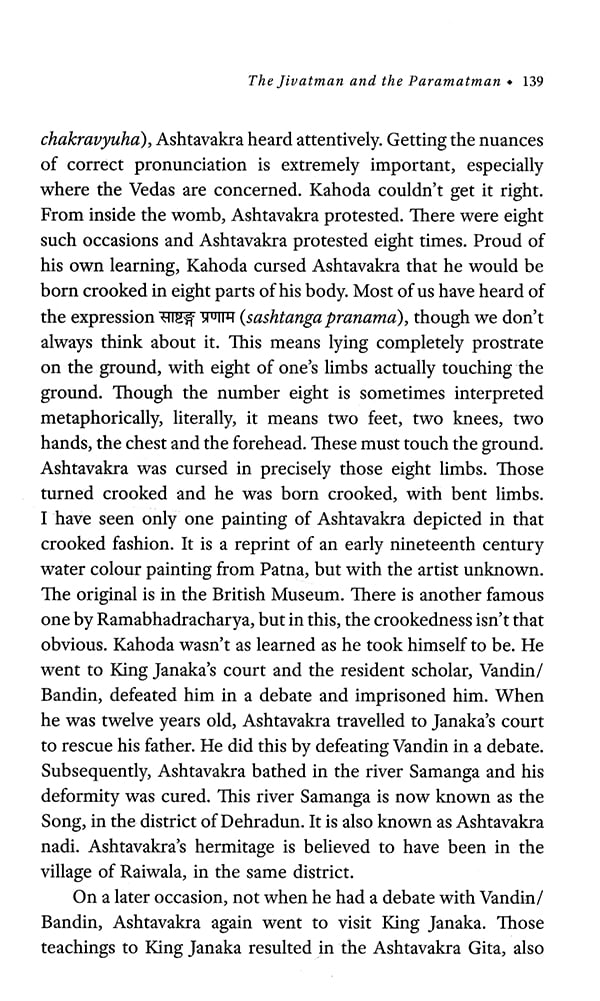
The Bhagavad Gita For Millennials
Book Specification
| Item Code: | NAZ615 |
| Author: | Bibek Debroy |
| Publisher: | Rupa Publication India Pvt. Ltd. |
| Language: | Sanskrit Text with English Translation |
| Edition: | 2020 |
| ISBN: | 9789390260386 |
| Pages: | 226 |
| Cover: | HARDCOVER |
| Other Details | 9.00 X 6.00 inch |
| Weight | 330 gm |
Book Description
A Millennial's Guide To The Bhagavad Gita, The Foundational Text On Dharma
As Arjuna stands on the battlefield of the Great War of Kurukshetra, he finds himself surrounded by men he has known for years. He must wound, maim or kill them to earn what the Pandavas deserve. But how can he kill those in whose laps his childhood was spent, those gurus who taught him to hold his bow? As Arjuna faces this dilemma, Krishna, an avatara of Lord Vishnu, appears before him in his universal form. And thus begins a dialogue between them on what is right and what is wrong, on dharma and on the cycle of cause and consequence.
One of the core Hindu scriptures, the Bhagavad Gita holds important lessons on how we can live our lives and fulfil our duties, but the millennials may consider it too ancient for their use or too complex for their understanding. In this book, Bibek Debroy recasts the Bhagavad Gita in a simple and cohesive form for millennials, so that its content and deeper meaning are not lost with the generations of our grandparents and parents.
Bibek Debroy is a renowned economist, scholar and translator. He has worked in universities, research institutes and for the government. He has widely published books, papers and articles on economics. As a translator, he has translated various ancient Indian texts into English and is best known for his magnificent rendition of the Mahabharata in ten volumes as well as the three-volume Valmiki Ramayana.
Hinduism has many major texts, some of the shruti variety and some of the smriti variety. Shruti means that which has been heard or revealed. Therefore, shruti texts do not have a human agent as a composer. Examples of shruti texts are Vedas, Brahmanas, Aranyakas and Upanishads. Not only do shruti texts have no human as a composer, they don't change from age to age. Vaguely, everyone is aware of the four yugas-satya or krita yuga, treta yuga, dvapara yuga and kali yuga. The Upanishads will be the same, regardless of which yuga we are in. A smriti text is something that is remembered, a reference to retention through memory, as knowledge was disseminated through oral transmission. The dharmashastra texts (like Manu Samhita), the nitishastra texts (like Panchatantra), itihasa (Ramayana, Mahabharata) and the Puranas are smriti texts. Each of these was composed by a human and each of these is specific to a certain age. In other words, if the Manu Samhita is appropriate for satya yuga, a different samhita may be appropriate for kali yuga.
**Contents and Sample Pages**